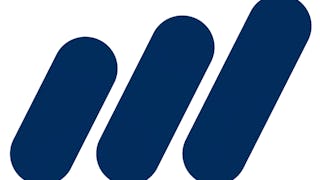What Is an Accountancy Degree? A 2025 Guide to Accounting Degrees
March 13, 2025
Article · 3 min read

Cultivate your career with expert-led programs, job-ready certificates, and 10,000 ways to grow. All for $25/month, billed annually. Save now


(123 reviews)
Recommended experience
Beginner level
No prior experience required.
(123 reviews)
Recommended experience
Beginner level
No prior experience required.
Master the mechanics of financial accounting.
Understand the structure, functions, and interrelation of the basic financial statements (balance sheet, income statement, and cash flow statement).
Be able to perform a structured fundamental analysis of the financial statements to assess a firm’s profitability, liquidity, and solvency.
Be familiar with the accounting rules governing the recognition and measurement of key activities, events and transactions.

Add to your LinkedIn profile
27 assignments


Add this credential to your LinkedIn profile, resume, or CV
Share it on social media and in your performance review

This is part of a two-class sequence on financial accounting. FINANCIAL ACCOUNTING I & II, held consecutively, will provide you with a strong foundation to tackle many financial issues. Accounting I covers the basics, while Accounting II deals with more advanced topics. The topics discussed are “general” and apply to accounting practices worldwide – whether in the USA, Europe, Asia, etc. You can take Accounting I on a standalone basis, or, you can take it as part of a two course sequence.
Accounting is “the language of business”. It is spoken by managers, employees, investors, financial analysts, internal and external auditors, supervisory boards, management accountants, bankers and other decision-makers with whom managers regularly interact. It is widely agreed that future business leaders need to understand this language in order to interpret and use financial statements and other accounting information for internal management purposes (e.g., planning, directing, controlling) as well as corporate communication purposes (e.g., capital markets, banks, rating agencies). If you want to compete in this arena, it will be useful for you to acquire a working knowledge of accounting. This class is targeted to students having little, if any, background in financial accounting. At the end of the day, numbers are what matter in the business world. You just cannot escape them; hence, you should learn them well. Contrary to what you might believe, you cannot become a successful professional unless you master the numbers of the financial world. This is the class that will teach you how.
Why learn accounting? Because it is an integral part of finance, one of the most sought after and highly paid professions across the world. Financial literacy is extremely valuable from a personal and professional point of view, irrespective of what type of job you are doing.
1 video3 readings
The balance sheet is a THE fundamental financial statement, and learning it is essential when studying accounting. This is a big and complex topic, hence we break it down into two sessions. The learning objectives of this module are: Understand the foundation of double-entry accounting; Understand the accounting equation, Assets = Liabilities + Equity; Understand that every transaction in a company affects at least two accounts and the balance sheet remains balanced; Understand how accountants ensure that financial records are accurate and transactions are properly recorded; Get a snapshot of a company’s financial position; Understanding financial health, by knowing what the company owns (assets), what it owes (liabilities), and what remains to the owners (equity); Understand how to assess liquidity and solvency; Look at current assets (like cash and receivables) and current liabilities, and assess a company’s ability to meet short-term obligations; Understand solvency, by comparing total liabilities to total assets, and evaluate a company's ability to meet long-term debts; Understand how much of a company’s assets are financed by owners, and understand capital structure.
1 video2 readings4 assignments
This is a continuation of Module 1, we go deeper into the details, and we do a lot of practice to solidify our learning. The objectives remain the same as that of Part 1: Understand the foundation of double-entry accounting; Understand the accounting equation, Assets = Liabilities + Equity; Understand that every transaction in a company affects at least two accounts and the balance sheet remains balanced; Understand how accountants ensure that financial records are accurate and transactions are properly recorded; Get a snapshot of a company’s financial position; Understanding financial health, by knowing what the company owns (assets), what it owes (liabilities), and what remains to the owners (equity); Understand how to assess liquidity and solvency; Look at current assets (like cash and receivables) and current liabilities, and assess a company’s ability to meet short-term obligations; Understand solvency, by comparing total liabilities to total assets, and evaluate a company's ability to meet long-term debts; Understand how much of a company’s assets are financed by owners, and understand capital structure.
1 video1 reading5 assignments
The income statement helps us understand performance, which probably is what most people care about the most. This is again a big and complex topic, hence we break it down into two sessions. The learning objectives of this module are: Understand how to measures profitability; Learn to differentiate between revenues vs. expenses vs. profits; Understand bottom line / net income, a key indicator of financial performance; Evaluate the success of the company’s operations; Evaluate operational efficiency, and how a company generates profit from its core operations; Help identify areas where costs can be reduced or revenues can be increased; Understand the components of performance: gross margins, administrative expenses, R&D and marketing, interest expense to bankers, and taxes; Understand how the income statement / company performance affects the balance sheet through equity; Understand the relation between profits and dividends; Understand that concept of accrual accounting: performance and cash flows are not necessarily the same thing.
2 videos2 readings4 assignments
This is a continuation of Module 2, we go deeper into the details, and we do a lot of practice to solidify our learning. The objectives remain the same as that of Part 1: Understand how to measures profitability; Learn to differentiate between revenues vs. expenses vs. profits; Understand bottom line / net income, a key indicator of financial performance; Evaluate the success of the company’s operations; Evaluate operational efficiency, and how a company generates profit from its core operations; Help identify areas where costs can be reduced or revenues can be increased; Understand the components of performance: gross margins, administrative expenses, R&D and marketing, interest expense to bankers, and taxes; Understand how the income statement / company performance affects the balance sheet through equity; Understand the relation between profits and dividends; Understand that concept of accrual accounting: performance and cash flows are not necessarily the same thing.
2 videos1 reading5 assignments
The cash flow statement helps us understand cash movements. Perhaps you know it since you are a child: Cash is King! This is again a big and complex topic, hence we break it down into two sessions. The learning objectives of this module are: Understand how to track movements in cash, inflows and outflows; Understand how much cash is generated and used; Understand how to manage liquidity; Distinguish between different cash activities: operations, investments, financing; Understand the sustainability of the business: are we self-sufficient? Are we liquid? Understand the difference between profitability and cash flows; Understand that accrual accounting used in the income statement has to be complemented by understanding cash positions; Track how much cash goes into investments, whether tangible or intangible; Track what cash is borrowed from banks, and other lenders; Understand how much cash is paid to shareholders in terms of dividends, and how much cash is raised through stock sales; Understand non-cash adjustments, and reconcile between profits and cash movements; Understand how cash flows from the cash flow statement flow into the balance sheet.
2 videos2 readings4 assignments
This is a continuation of Module 3, we go deeper into the details, and we do a lot of practice to solidify our learning. The objectives remain the same as that of Part 1: Understand how to track movements in cash, inflows and outflows; Understand how much cash is generated and used; Understand how to manage liquidity; Distinguish between different cash activities: operations, investments, financing; Understand the sustainability of the business: are we self-sufficient? Are we liquid? Understand the difference between profitability and cash flows; Understand that accrual accounting used in the income statement has to be complemented by understanding cash positions; Track how much cash goes into investments, whether tangible or intangible; Track what cash is borrowed from banks, and other lenders; Understand how much cash is paid to shareholders in terms of dividends, and how much cash is raised through stock sales; Understand non-cash adjustments, and reconcile between profits and cash movements; Understand how cash flows from the cash flow statement flow into the balance sheet.
2 videos1 reading5 assignments
We asked all learners to give feedback on our instructors based on the quality of their teaching style.



The University of Lausanne is a Swiss state university founded in 1537. It is focused on Medicine, Life Sciences, Geosciences, Environmental Sciences, Business, Humanities, Social Sciences and Sport Sciences. UNIL is a research-intensive university which encourages interdisciplinarity. It is also renowned for its innovative teaching methods.

University of Lausanne
Course

IESE Business School
Course

Corporate Finance Institute
Course
University of Illinois Urbana-Champaign
Specialization




123 reviews
84.55%
11.38%
2.43%
0%
1.62%
Showing 3 of 123
Reviewed on Dec 5, 2024
The explanations are clear and the practice quizzes are helpful.
Reviewed on Feb 7, 2025
Very interesting course, highly recommended. The teacher explains very well and clearly.
Reviewed on Mar 24, 2025
so hard, so difficult subject yet taught as if its very easy

Unlimited access to 10,000+ world-class courses, hands-on projects, and job-ready certificate programs - all included in your subscription
Earn a degree from world-class universities - 100% online
Upskill your employees to excel in the digital economy
Access to lectures and assignments depends on your type of enrollment. If you take a course in audit mode, you will be able to see most course materials for free. To access graded assignments and to earn a Certificate, you will need to purchase the Certificate experience, during or after your audit. If you don't see the audit option:
The course may not offer an audit option. You can try a Free Trial instead, or apply for Financial Aid.
The course may offer 'Full Course, No Certificate' instead. This option lets you see all course materials, submit required assessments, and get a final grade. This also means that you will not be able to purchase a Certificate experience.
When you purchase a Certificate you get access to all course materials, including graded assignments. Upon completing the course, your electronic Certificate will be added to your Accomplishments page - from there, you can print your Certificate or add it to your LinkedIn profile. If you only want to read and view the course content, you can audit the course for free.
You will be eligible for a full refund until two weeks after your payment date, or (for courses that have just launched) until two weeks after the first session of the course begins, whichever is later. You cannot receive a refund once you’ve earned a Course Certificate, even if you complete the course within the two-week refund period. See our full refund policy.
Yes. In select learning programs, you can apply for financial aid or a scholarship if you can’t afford the enrollment fee. If fin aid or scholarship is available for your learning program selection, you’ll find a link to apply on the description page.
Financial aid available,